They Died with Their Boots On

Brief Synopsis
Cast & Crew
Raoul Walsh
Errol Flynn
Olivia De Havilland
Arthur Kennedy
Gene Lockhart
Anthony Quinn
Film Details
Technical Specs

Synopsis
The new group of cadets at West Point in 1857 includes George Armstrong Custer, a flamboyant dresser with long curls, who wants to experience the glory of war. During his time at the military academy, Custer commits many infractions and his classroom performance leaves much to be desired. When Abraham Lincoln is elected president, and civil war breaks out, Custer is eager to graduate and join the battle. While on a punishment tour, Custer meets pretty Elizabeth Bacon, known as Libby, and arranges to meet her later that evening. Before their rendezvous, Custer, like many other cadets, is graduated early and sent to Washington, D.C. to wait for a commission. In Washington, Custer's bad reputation prevents him from receiving an immediate commission. Tired of waiting, he charms Lt. General Winfield Scott into inviting him to lunch and then confesses his dilemma. Scott has him assigned to the Second U.S. Cavalry. At the Battle of Bull Run on 21 July 1861, Custer disregards orders and leads his men in an attack on the enemy. He is wounded in battle and sent home, but later receives a medal. While on leave, Custer plans a visit to Libby to apologize for standing her up at West Point. Before he arrives at her house, Custer encounters Samuel Bacon and, not knowing that he is Libby's father, quarrels with him. Libby is delighted to see Custer and readily forgives him, but when she introduces him to her father, he angrily throws Custer out. Custer and Libby meet secretly that night, and Custer promises to marry her when he becomes a general, reasoning that her father could not possibly object to him then. Custer rejoins his regiment and by mistake is made a general of the Michigan Brigade. At the Battle of Gettysburg, in Pennsylvania, Custer again attacks against orders and the brigade loses many men, but Confederate general Jeb Stuart is driven back. Custer continues to distinguish himself in the war, and after it is over, Bacon agrees to Libby's marriage. With the end of the war, however, Custer is out of work. Ned Sharp, one of Custer's fellow cadets, offers him the presidency of a corporation he has formed with his father to develop the Dakota Territory, but when Custer learns he will only be a figurehead, he turns down the offer. Once again General Scott comes to the rescue, this time at Libby's request, and Custer is posted to Fort Lincoln in the Dakota Territory. The fort is in total disarray when Custer and Libby arrive. Sharp has opened a trading post that sells rifles to the Indians and also runs a bar that has resulted in a drunken corps of cavalrymen. Custer whips the soldiers into shape, closing both the bar and the trading post. Under his leadership, the Seventh U.S. Cavalry wages war on the Indians. When Crazy Horse's Sioux agree to move away from their land as the U.S. government has ordered, on condition they are allowed to retain the sacred land in the Black Hills, Custer promises he will defend their rights there. The Sharps's corporation, however, has plans to run a railroad through there in order to bolster its failing business, and the Sharps work behind the scenes to have Custer relieved of his command. In response, Custer accuses Major Romulus Taipe of falsely announcing the discovery of gold in the Black Hills. Learning of an approaching battle with the Indians under the leadership of Sitting Bull, Custer begs to be returned to his command. On 25 June 1876, to save Brigadier General Alfred Terry from certain defeat, Custer sacrifices the entire Seventh Cavalry in the Battle of Little Big Horn. Afterward, Libby presents a letter sent to her by Custer before his death. In his dying declaration, Custer renews his accusations against Taipe, who is forced to resign and return the Black Hills to the Sioux.

Director

Raoul Walsh
Cast

Errol Flynn

Olivia De Havilland
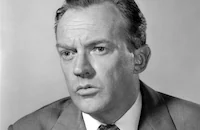
Arthur Kennedy

Gene Lockhart

Anthony Quinn

Stanley Ridges

John Litel

Walter Hampden

Sydney Greenstreet

Regis Toomey

Hattie Mcdaniel
George P. Huntley Jr.
Frank Wilcox
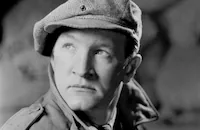
Joseph Sawyer

Minor Watson

Byron Barr

John Ridgely

Joseph Crehan
Aileen Pringle
Anna Q. Nilsson
Harry Lewis
Michael Ames
Walter Brooke
Selmer Jackson
Bob Perry
Garland Smith
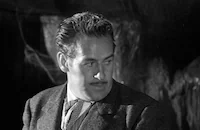
Roy Barcroft
Dick French
Marty Faust
Paul Kruger
Steve Darrell
De Wolfe Hopper
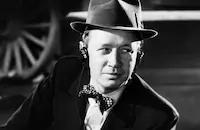
Eddie Acuff
Sam Mcdaniel
George Reed
Pat Mcveigh
James Seay
George Eldredge

John Hamilton
Renie Riano
Edna Holland
Minerva Urecal
Virginia Sale
Vera Lewis
Spencer Charters
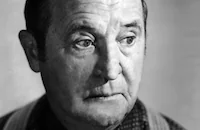
Frank Orth

Ray Teal

Hobart Bosworth
Joe Devlin
Fred Kelsey
Wade Crosby
Dick Wessel
Weldon Heyburn
Harry Strang
Max Hoffman Jr.
Frank Mayo
Sol Gorss
William Forrest

Addison Richards

Irving Bacon

Russell Hicks
Victor Zimmerman
Ian Macdonald

Jack Mower
Alberta Gray
Annabelle Jones
Hugh Sothern
Arthur Loft
Lane Chandler
Eddie Parker
Carl Harbaugh
G. Pat Collins
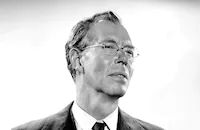
Walter Baldwin
Clancy Cooper
Herbert Heywood
Joseph King

Ed Keane
Francis Ford

Frank Ferguson
Virginia Brissac
Jack Budlong

George Murphy
Crew
Milo Anderson
Claude E. Archer
Jane Bill
Eddie Blatt
Eugene Busch
Yakima Canutt
William Classen
Lenore Coffee
Benny Cohan
Robey Cooper
B. Reeves Eason
Eddie Edwards
Robert Fellows
Leo F. Forbstein
Ellsworth Fredericks
Bud Friend
Bruce Gailbraith
Bert Glennon
Katherine Grams
Ward Hamilton
Howard Hill
John Hoffman
William Holmes
Everett A. Hughes
John Hughes
Wally Kline
Cliff Lyons
Aeneas Mackenzie
Nellie Manley
Frank Mattison
Dick Moder
Mickey Moran
Fred Morgan
Ned O. Nair
Ralph Owen
Harlan Phillips
Russ Saunders
Don Siegel
Max Steiner
Lt. Col. J. G. Taylor Retired, U.s. Army
Dolph Thomas
William Wallace
Perc Westmore
Dick H. Williams
Bill Yrigoyen
Joe Yrigoyen

Photo Collections
Videos
Movie Clip






Trailer
Hosted Intro
Film Details
Technical Specs

Articles
They Died With Their Boots On
Though riddled with historic inaccuracies - Custer did not drink and he was never out of the army for any length of time - They Died With Their Boots On is significant for other reasons. It was the last teaming of Flynn and Olivia de Havilland who had made eight films together including Captain Blood (1935) and The Adventures of Robin Hood (1938). Ironically, de Havilland was not the first choice for the role of Mrs. Custer. It was first offered to her sister, Joan Fontaine, who turned it down. They Died With Their Boots On was also one of the last big-budget Westerns produced by Warner Brothers, who like other major studios, began to turn out more inexpensive Western programmers during the forties.
Filmed approximately forty miles north of Los Angeles in a wide valley that resembled the plains of Nebraska and the Dakotas, the film had its share of production misfortunes. Three men were killed during the filming. One fell from a horse and broke his neck. Another stuntman had a heart attack. The third, actor Jack Budlong, insisted on using a real saber to lead a cavalry charge under artillery fire. When an explosive charge sent him flying off his horse, he landed on his sword, impaling himself.
No stranger to freak accidents himself, director Raoul Walsh had lost an eye in a car accident while shooting In Old Arizona in 1929. But his dilemma during the filming of They Died With Their Boots On was of a different nature. He couldn't find enough real Sioux Indians to play the parts of the attacking savages (only sixteen showed up at the casting call) and was forced to use hundreds of Filipino extras and Caucasians dressed as Sioux warriors in the background. The extra expense incurred by the more than 1,000 extras was one of the reasons the film's budget soared over $2 million dollars, a huge sum at the time.
When Warner Bros. studio head Jack Warner screened the completed film, he said, "This is one of Flynn's best. If Custer really died like that history should applaud him." This was a rare compliment coming from Warner who could be devastating in his film critiques and was known to have clashed with Flynn countless times during the latter's contract days at the studio.
Director: Raoul Walsh
Producer: Hal B. Wallis (executive), Robert Fellows
Screenplay: Wally Kline, Aeneas MacKenzie
Cinematography: Bert Glennon
Editor: William Holmes
Art Direction: John Hughes
Music: Max Steiner
Cast: Errol Flynn (Custer), Olivia de Havilland (Elizabeth Bacon), Arthur Kennedy (Ned Sharp), Charley Grapewin (California Joe), Gene Lockhart (Samuel Bacon), Anthony Quinn (Crazy Horse).
BW-140m. Close captioning.
by Jeff Stafford

They Died With Their Boots On
Quotes
We ride ... to hell. Or to glory. It depends on your point of view.- George Armstrong Custer
Only glory is brought to heaven, not money- George Armstrong Custer
I must get myself a tiger skin as soon as possible.- George Armstrong Custer
Trivia
Jack Budlong died after falling from his horse onto his sword.
Untrained rider George Murphy was killed when he fell from his horse while drunk.
Because of a shortage of native Americans in Hollywood, Warner Bros. imported 16 Sioux from the Dakotas.
To fill the background with "Indians", hundreds of Filipino extras were filmed while the 16 Sioux were used for the close-ups.
Notes
Screenwriter Wally Klein's surname is spelled Kline in the onscreen credits. Biographical sources give the following information about George Armstrong Custer: Custer had a distinguished career during the U.S. Civil War, ending as the army's youngest major-general, and was known for his relentless pursuit of General Robert E. Lee. In 1865 Custer was court-martialed and suspended without pay for one year for harsh treatment of his troops. He was reinstated to counter the increased hostility of the Plains Indians, and in 1875 he took command of Ft. Abraham Lincoln in the Dakota Territory. In 1874, Custer led an expedition to confirm the rumored existence of gold in the Black Hills region of South Dakota. The character of Romulus Taipe was invented for the film. When the Sioux did not comply with a government order directing all Indians to move onto reservations by January 31, 1876, war broke out. Custer, under the command of General Alfred Terry, led his soldiers to total defeat at the Battle of Little Big Horn. Not a single soldier of the 250 men under his command survived. Custer was buried with military honors at West Point on October 10, 1877. Following his death, his widow wrote and lectured about his life and championed his deeds. Controversy over Custer's conduct at Little Big Horn continues to this day.
Papers included in the Warner Bros. Collection at the USC Cinema-Television Library add the following information about the production: Joan Fontaine, Olivia De Havilland's sister, turned down the role of "Libby" and Priscilla Lane, Elisabeth Fraser and Nancy Coleman were all tested for the part. Michael Curtiz was the studio's original choice to direct. Writer Lenore Coffee was hired to strengthen the romantic scenes between Errol Flynn and De Havilland. A number of people were injured during the battle scenes; Jack Budlong, a twenty-eight-year-old stuntman, died after falling from his horse on to his sword, and untrained rider George Murphy was killed when he fell from his horse while drunk. Scenes were shot on location at Busch Gardens in Pasadena, the Warner Ranch in Calabasas, CA, Iverson Ranch in Chatsworth, CA and at nearby Lasky Mesa. Second unit director B. Reeves Eason directed much of the Battle of Little Big Horn footage. He had previously co-directed (with Michael Curtiz) the final battle scene in Warner Bros.' 1936 film The Charge of the Light Brigade (see AFI Catalog of Feature Films, 1931-40; F3.0655). An Hollywood Reporter news item reports that a shortage of Native Americans in Hollywood led Warner Bros. to import Sioux from a reservation in the Dakotas. The USC files note that sixteen Dakota Indians worked in the film. The film was completed twenty-six days behind schedule. In his autobiography Raoul Walsh states "I tried to show [the Indian] as an individual who only turned vindictive when his rights as defined by treaty were violated by white men." This was the eighth and last film in which De Havilland and Flynn starred together. Some modern sources state that Eleanor Parker played a bit role in this film, but her name does not appear on the CBCS.
Among the other films about Custer are the 1909 Selig Polyscope film On the Little Big Horn or Custer's Last Fight, starring Paul McCormick, Jr.; the 1916 Vitagraph film Britton of the Seventh, directed by Lionel Belmore and starring Darwin Karr and Charles Kent (see AFI Catalog of Feature Films, 1911-20; F1.0488); Custer's Last Fight, a 1925 re-issue of a Thomas Ince film, and the 1926 Universal film The Flaming Frontier, directed by Edward Sedgwick and starring Hoot Gibson and Anne Cornwall (see AFI Catalog of Feature Films, 1921-30; F2.1119 and F2.1798); the 1936 Weiss Productions film Custer's Last Stand, directed by Elmer Clifton and starring Rex Lease (see AFI Catalog of Feature Films, 1931-40; F3.0906); the 1968 U.S.-Spanish co-production Custer of the West, directed by Robert Siodmak and starring Robert Shaw, Mary Ure and Robert Ryan; and the 1991 ABC Television film Son of the Morning Star, directed by Mike Robe and starring Gary Cole, Rosanna Arquette and Dean Stockwell.

Miscellaneous Notes
Released in United States 1941
Released in United States 1941
















